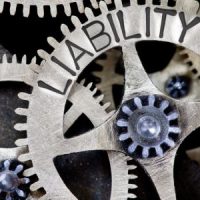At-School Injuries: Who is to Blame?

Online schools are more common today than ever before. But over 90 percent of Washington kids attend public school. School administrators assume responsibility for student safety, as well as student education, when kids walk through the doors. Schools are not above the law. Instead, they’re accountable to the same principles of negligence and injury as all other owners.
As outlined below, negligence is basically a lack of care. Injury comes in various forms, and school administrators may be found responsible for students’ injuries.
Duty of Care
To determine the duty of care in a premises liability case, like a fall or a third-party injury, Washington law, like the law in most other states, divides victims into three categories:
- Invitee: Students and parents usually have permission to visit a school. These visits usually benefit the school. The state pays schools money when students attend, and parental visits cheer up students. Generally, the landowner, which in this case is the school, has a duty of reasonable care in these situations.
- Licensee: This status is one step below invitee. It often applies in mixed classification situations. Assume Sophomore Sally sneaks into the faculty lounge, where she slips and falls on a wet spot. Sally was an invitee to the school but a trespasser in the faculty lounge. Therefore, many courts split the difference and apply a lower duty of care, usually a duty to warn.
- Trespasser: This term simply means no permission and no benefit. If Sally comes to school at night so she can skateboard, she’s a trespasser. Usually, owners have no safety responsibility in such situations. However, some exceptions, like the attractive nuisance rule, may apply in some cases.
Usually, the judge decides what duty applies during a pretrial hearing. At trial, a Seattle personal injury lawyer must prove, by a preponderance of the evidence, the school knew about the injury-causing hazard.
Knowledge of Hazard
Direct and circumstantial evidence is available on this point. Safety alerts and memos are direct evidence of actual knowledge. Such strong evidence usually convinces jurors that the school was clearly negligent. Circumstantial evidence of constructive knowledge (should have known) might do in some cases. If Sally slipped on a faculty lounge wet spot late in the day, the school probably should have known about it. If Sally’s injury occurred in the morning, that’s different.
Additionally, a victim must prove foreseeability, or legal causation. This element is often the key element in third-party injury claims, like assault injuries.
Such injuries are foreseeable (possible) if similar instances occurred previously or the school is in a high crime area. The school district, as opposed to the school itself, is usually financially responsible for damages in these cases.
Count on a Diligent King County Lawyer
School districts have important safety responsibilities. For a free consultation with an experienced personal injury lawyer in Seattle, contact Emerald Law Group. The sooner you reach out to us, the sooner we start working for you.
Source:
nces.ed.gov/fastfacts/display.asp?id=55#
